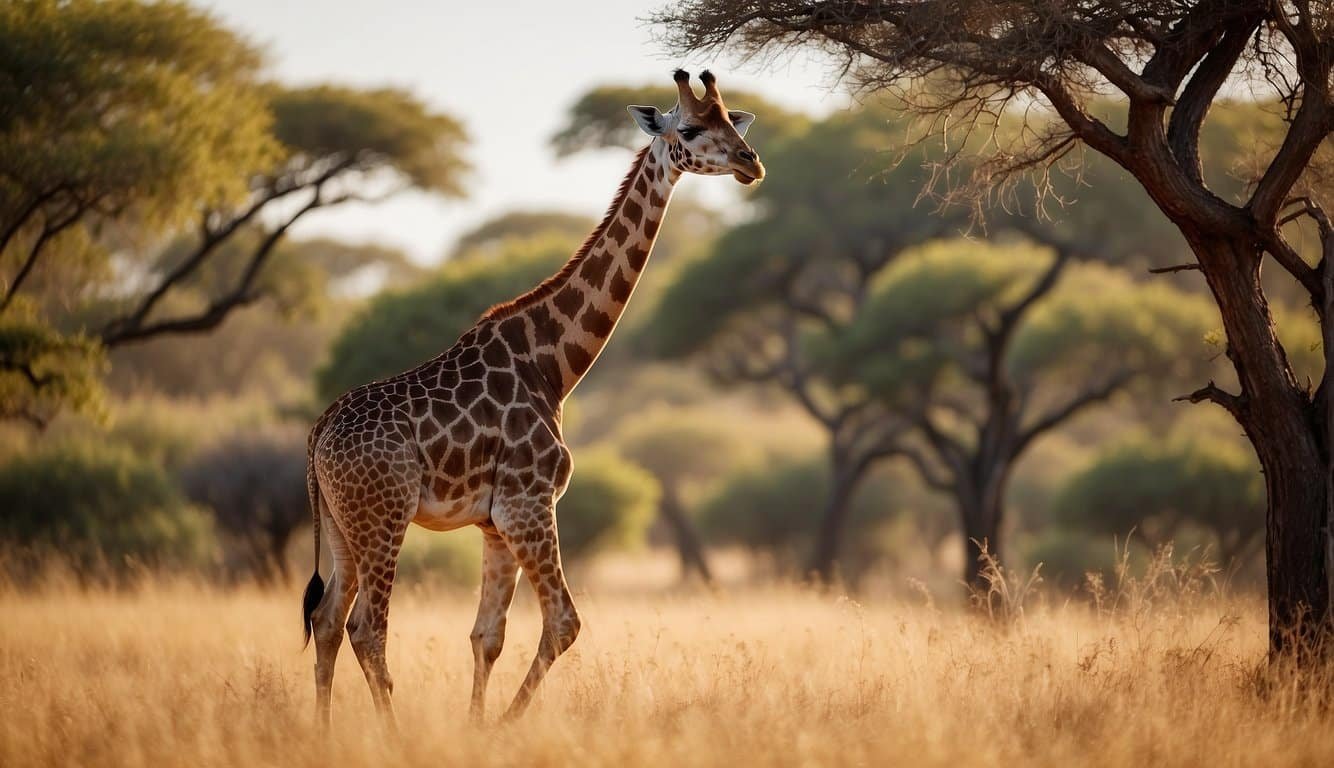Giraffe Basics
Giraffes are fascinating creatures, renowned for their incredible height and spotted coats. Let’s explore essential aspects of these gentle giants, such as their distinctive physical attributes and their unique behaviors that distinguish them from other wildlife.
Physical Characteristics
Giraffes are the world’s tallest mammals, thanks to their towering legs and elongated necks. An adult male giraffe can stand up to 18 feet tall, while females are generally slightly shorter. The long neck of a giraffe, which contains the same number of vertebrae as a human neck, allows it to reach high foliage and keep a lookout for predators. Their hallmark coat patterns are unique to each individual and serve as camouflage.
Both male and female giraffes have a pair of ossicones, which are horn-like protuberances on top of their skulls, covered in skin and hair. Males can be distinguished by their larger, thicker ossicones and also tend to have more hair on them. Giraffes’ large eyes give them excellent vision, and their long tongues, which can reach up to 20 inches, help them strip leaves from branches.
Behavior and Lifestyle
Giraffes are social animals found in loosely organized herds, often grazing together on the savannas of sub-Saharan Africa. While giraffes are not territorial, they do have social structures, with males establishing dominance through behaviors such as “necking” — a ritualistic fight where two males swing their necks and head-butt each other.
These animals have adapted to going long periods without water, often only needing to drink once every few days. They sleep and rest standing up, and even give birth standing. Giraffes are ruminants, meaning they chew cud regurgitated from their stomach to help digest their food.
Female giraffes are doting mothers who give birth to a single calf after a gestation period of around 15 months. Calves can stand and run within a few hours of birth and will join a nursery group, where several mothers look after the offspring together, allowing for a communal caregiving system unique to these creatures.
Giraffe Ecology and Conservation

Giraffe ecology and conservation revolves around understanding how these tall mammals interact with their environment and the various efforts being taken to ensure their survival amidst numerous challenges.
Human Interactions
Human activities have a significant impact on giraffes, often leading to habitat loss due to agricultural expansion, human settlement, and infrastructure development. Encroachment into giraffe habitats limits their available living space and puts them in closer proximity to human settlements, increasing the likelihood of human-wildlife conflict. Additionally, poaching for giraffe meat, hide, and tail hair poses a dire threat. Efforts by conservationists often focus on mitigating these interactions through education, anti-poaching initiatives, and legal protection. For instance, conservation strategies involve the study of giraffe behavior to develop more effective plans for improving their prospects.
Environmental Adaptations
Giraffes showcase remarkable adaptations that allow them to thrive in varying ecosystems across Africa, primarily in savannahs, grasslands, and open woodlands. Their long legs and necks facilitate feeding on treetops, out of reach for other herbivores, and play a crucial role in spotting predators from afar. However, giraffes face threats from climate change which can lead to changes in vegetation and water sources. Predators like lions and hyenas are a threat to young and sick giraffes despite their formidable size. Conservation status, as evaluated by the International Union for Conservation of Nature (IUCN), currently lists giraffes as ‘Vulnerable’, with some subspecies facing even higher risks of extinction. Strategies are in place to address the challenges posed by changes in climate and ecosystems, as outlined in the African Journal of Ecology.

